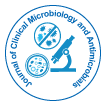

Opinion Article - (2023)Volume 7, Issue 1
Bacteria are a type of microorganisms that exist in a wide variety of forms and are found almost everywhere on Earth. They are among the earliest and most abundant life forms, with some species having been around for billions of years. Bacteria are single-celled organisms that are typically much smaller than other types of cells, such as animal or plant cells. Despite their small size, bacteria play a crucial role in maintaining the balance of ecosystems and performing various functions that are essential for life on Earth.
The cell wall of bacteria provides structural support and protection from external pressures, such as osmotic stress. The cell membrane, which is a lipid bilayer, encloses the cytoplasm and regulates the transport of molecules into and out of the cell. The cytoplasm contains the genetic material of the bacteria, which is typically a single circular chromosome, as well as ribosomes, which are responsible for protein synthesis. Bacterial Diversity Bacteria are incredibly diverse and exist in many different forms, ranging from free-living organisms to those that form symbiotic relationships with other organisms. Some bacteria are harmful and can cause diseases, while others are beneficial and play an essential role in maintaining the balance of ecosystems. Pathogenic bacteria are responsible for a wide range of diseases, including pneumonia, tuberculosis, cholera, and meningitis. These bacteria can cause harm by producing toxins or by directly damaging the tissues of the host organism. Many pathogenic bacteria have evolved complex mechanisms to evade the immune system of the host organism, making them difficult to treat with antibiotics. Beneficial bacteria, on the other hand, play a crucial role in many ecosystems. For example, some bacteria are responsible for fixing nitrogen from the atmosphere, which is essential for the growth of plants. Other bacteria are used in the production of food, such as cheese and yogurt, as well as in the production of antibiotics and other medicines.
Bacterial Reproduction through a process called binary fission, in which the cell divides into two identical daughter cells. This process is relatively simple and allows bacteria to reproduce quickly, with some species dividing every 20 minutes under ideal conditions. Bacteria can also exchange genetic material through a process called horizontal gene transfer, which allows them to acquire new traits from other organisms. Bacterial Growth Conditions can survive in a wide range of environmental conditions, including extreme temperatures, pH levels, and pressures.
Some bacteria can even survive in the harsh conditions of outer space, demonstrating the resilience of these organisms the growth of bacteria is influenced by a variety of factors, including temperature, pH, nutrients, and oxygen availability. Bacteria are classified into three groups based on their optimal growth temperature: psychrophiles, mesophiles, and thermophiles.
Bacteria interacts with other organisms in many ways, including forming symbiotic relationships, competing for resources, and acting as decomposers. Symbiotic relationships can be either mutualistic, where both organisms benefit, or parasitic, where one organism benefits at the expense of the other. One of the most well-known symbiotic relationships involving bacteria is that between bacteria in the human gut and their host. The human gut microbiome consists of trillions of bacteria that play a crucial role in digestion and immune function. These bacteria also produce essential vitamins and metabolites.
Bacteria can be either harmful or beneficial to other organisms. Pathogenic bacteria are responsible for a wide range of diseases, including pneumonia, tuberculosis, cholera, and meningitis.
These bacteria can cause harm by producing toxins or by directly damaging the tissues of the host organism. Many pathogenic bacteria have evolved complex mechanisms to evade the immune system of the host organism, making them difficult to treat with antibiotics. Bacteria can also compete with other organisms for resources, such as nutrients and space. Some bacteria produce antibiotics that can kill other bacteria, while others compete for resources by producing toxins or other harmful substances.
Citation: Kather S (2023) Bacterial Reproduction and Growth: Understanding the Basics. J Clin Microbiol Antimicrob. 7:152.
Received: 01-Mar-2023, Manuscript No. JCMA-23-23318; Editor assigned: 03-Mar-2023, Pre QC No. JCMA-23-23318 (PQ); Reviewed: 17-Mar-2023, QC No. JCMA-23-23318; Revised: 24-Mar-2023, Manuscript No. JCMA-23-23318 (R); Published: 31-Mar-2023 , DOI: 10.35248/JCMA.23.7.152
Copyright: © 2023 Kather S. This is an open-access article distributed under the terms of the Creative Commons Attribution License, which permits unrestricted use, distribution, and reproduction in any medium, provided the original author and source are credited.